Blockchain technology has been around since the early 1990s, but it's only in the last few years that Bitcoin has become widely known and used. In this article, we briefly explain the concepts behind the blockchain, as well as its opportunities and risks as a force for social and environmental progress.
What Blockchain Is and How It Works
The blockchain is a database in which all transactions are stored successively. A “transaction” in this sense can refer to a variety of activities, such as transferring money and filing documents. Central to all blockchains is the “peer-to-peer” model, through which all transactions are handled by a trusted third party (e.g., payments may be facilitated by a bank or PayPal). This intermediary allows transactions to be processed directly from sender to recipient and securely identified with a digital signature. All transactions are added to a giant, decentralized master file which is stored on every computer participating in the blockchain. Through a process called “mining,” each verified transaction is stored in a “block” which is added to the chain of verified transactions; hence the name, “blockchain.”
- Blockchain for Good
- The blockchain is a database in which all transactions are stored successively. A “transaction” in this sense can refer to a variety of activities, such as transferring money and filing documents.
Each block contains information on all transactions that have occurred within a ten-minute interval (so every ten minutes, a new block is mined). Before a block enters the chain, it must be marked with an official time stamp, so it is placed in a “waiting room” as preceding blocks are gradually stamped. The stamping process is carried out by a computer called a “miner,” which carries out a difficult calculation task to create a unique, simple code that facilitates collective control over the block. The miner that solves the task first receives bitcoins (or another virtual currency) as a reward, and the stamped block is added to the chain.
- Bitcoin
- Virtual currency based on the blockchain. It is used in online shops as a means of payment and is independent from national and reserve banks. Monetary transfers are secured via cryptographic encryption of the digital signature. This prevents the falsification or duplication of bitcoins. The total number of bitcoins in existence is currently limited to 21 million. Through mining, bitcoins are gradually “removed” and used within the blockchain system. Bitcoins can be converted to real currencies and are now accepted in various offline stores (there are even bitcoin exchange rates).
If someone wanted to manipulate the data set, they would have to not only alter ALL computers attached to the blockchain, but simultaneously edit all blocks in the chain. No longer would it be possible to falsify history, as some governments have done by destroying undesired literature and original documents. Such interference would only be possible through calculations so extensive that they would not be worth the effort (and the calculations become increasingly complex as the blockchain grows longer).
The Opportunities of Blockchain
The decentralized organization of the blockchain system makes manipulation extremely difficult. This makes money transfers, donations and storage (especially of legal documents) safer.
1) Property Rights: 70% of land owners worldwide have no secure claim to their land. Documents that confirm land ownership can be manipulated by the government and used for expropriation. In this way, governments can easily declare landowners’ proofs of ownership forged.
When these documents are entered into the blockchain “registry,” they can no longer be manipulated because any revision would require far too much effort. As a result, landowners gain a greater sense of security in their ownership, putting them in a much better economic position. Their verified proof of ownership enables them to engage in a variety of business activities, like lending, leasing, and, of course, freely disposing of their land.
2) SMEs: Small and medium-sized enterprises in developing countries can also benefit from the blockchain’s security. In a decentralized register, inventories of buildings, land, machines and other company assets can be stored securely. The blockchain also makes it easier for SMEs to get loans, since they can borrow small amounts from several lenders rather than depending on one or two local banks. This system allows new financing models that resemble cooperatives or crowdfunding to emerge.
3) Money Transfers: The largest source of cash flow from industrialized to developing nations is not development aid, but money transferred privately from emigrants to their home families (about $600 billion per year). Transfers cost time (between two and five days), their reliability varies, and banks such as Western Union charge up to 17% of the transfer amount in fees. For a transfer of $100, this means that $17 would be lost upfront: a VERY large sum in most developing countries. Through blockchain apps like Abra, however, transfers can be made directly from the sender’s to the receiver’s smartphones. The cash is disbursed by a so-called "cashier" (like the driver in an UBER ride), who is also registered in the app. Recipients can find cashiers who live nearby and have received favorable ratings from previous users. This system enables people to receive cash within minutes and for a much smaller fee (usually around 2%). The developing country also benefits as more money is invested in its economy and less is taken by the bank, which avoids the accumulation of money at a single financial institution.
- Ethereum
- A platform that provides the infrastructure for blockchain transactions. While it uses a form of currency called "ether,” this is only a means to an end and does not have real market value. Each time a transfer is made, Ethereum creates a so-called "smart contract" that is legally binding, even without the aid of lawyers or other intermediaries.
4) Sharing Economy: Thanks to the blockchain, there are (finally) opportunities to re-create a proper sharing economy. Airbnb and UBER are often cited as examples of the sharing economy, but ultimately, they are just large companies who profit from the commission model. Who would call a real estate broker part of the “sharing economy?" Through the blockchain, the intermediary is once again omitted. The house rental or car ride is delivered straight from provider to customer, payment is made directly, and evaluations are stored publicly so that they cannot be manipulated.
5) Data: Any data we place on the web contributes to our “virtual identities,” which we currently do not have full control over. The blockchain, however, could enable us to generate a "black box" in which all our data are stored online, but can only be fully accessed by us. For any online transaction or activity, we generally only need to share some of our personal information (e.g., why would a chat program need our telephone number if we only use it on a computer?). Rather than trusting third parties with our verified data, we could maintain control of our information and set clear limits on what we share.
6) Fair Pay: Artists can regain control over their intellectual property and secure fair payment by sharing their work through a blockchain system. This is yet another example of bypassing the intermediary. A song can manage itself in the blockchain by charging listeners a few cents per play (or more to use it as a ringtone or video soundtrack). In this way, the song can become its own “shop,” selling itself as a variety of packages. Through the blockchain, payments would be made to the song’s “bank account,” facilitating a direct flow of cash to the artist. This system could enable many creators to regain control over their work and receive pay directly without giving commissions to agencies or publishers.
The Risks of Blockchain
1) Illegal Transactions: While the anonymity of blockchain technology helps secure "good" data, it can also protect illegal business and money laundering. Criminals once used cash to leave no trace, but now, the blockchain could enable them to make invisible digital payments on a much larger scale. The encryption of blockchain transactions is so complex that the traders of weapons, drugs or even humans could not be tracked.
2) Job Loss: The blockchain is part of a worldwide trend towards digitization, which promises to dramatically change the job market over the coming years. It’s hard to say how many people could lose their jobs because of blockchain technology, but some estimates exceed 50%. This means that many people, particularly bankers and logisticians, will need to re-orient their careers.
IBM and MAERSK, the world's largest container shipping company, are currently working to transfer documentation of the global shipping process to a blockchain system. Because container shipping has more documentation than any other means of transport, this shift could create savings that would increase the global GDP by 5% and the volume of world trade by 15%. However, this action would not necessarily benefit workers: the savings would mainly result from reduced personnel costs.
Beyond job loss, a second damaging side effect of this development could be greater environmental impact as more containers are shipped.
3) Environment: The primary drawback of blockchain technology is its immense energy usage. The amount of electricity consumed by blockchain activities in 2014 would have been enough to supply all of Ireland for one year. If 50% of the world's population were to use the blockchain, furthermore, it would use up all of the electricity that is currently produced globally (and the constant need for new high-performance mining computers would only add to the demand on resources). At this point, blockchain technology clearly reaches its limits: such usage is not feasible nor reasonable. Societal progress made on one front would be offset by damage on another (a problem that also arises in efforts to meet the SDGs). We cannot seek advancement on social causes at the expense of environmental destruction, because such damage would be an enormous burden to future generations.
4) Access: The blockchain system can only be run at an enormous cost. The process of “mining,” or creating new blocks, requires time and energy that not everyone can spare. As a result, mining centers – which try to accumulate as many bitcoins as possible – have already developed. These centers demonstrate the very real risk that the blockchain system could be kept alive by a small number of individuals who develop a form of elitist oligarchy. The sooner someone enters the bitcoin system, the more bitcoins they can accumulate, so early adopters could gain a disproportionate number of coins. Such a hierarchy would undermine the blockchain’s unprecedented ability to protect individuals from dependency and exploitation.
What Does This Mean for the Social Sector?
Blockchain technology offers many opportunities to develop independence from large, central institutions, and it can make transactions more just by avoiding commissions and expropriation.
However, current limitations in energy production and environmental concerns mean that blockchain technology will not likely realize its full potential for social impact in the foreseeable future.
Originally published October 16, 2017

